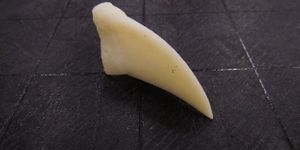This New 3D Printer By MIT Can Print With 10 Different Materials
With 3D printing becoming such a growing industry in current times, you can bet that the explosive innovation is creating some amazing things. We’ve seen 3D printing used for a variety of things, like building bridges, helping wildlife, and even creating glass sculptures, but a new innovation will let 3D printing take over even more of the world’s manufacturing processes.
Massachusetts Institute of Technology (MIT) has unveiled a new 3D printing machine that can print with up to 10 different materials at once. MIT calls it “MultiFab.”
This is a huge breakthrough because typical 3D printing machines are limited to one material. For example, one 3D printer may have been made specifically for making things out of plastic, while another may be made for making things out of titanium, or another for glass.
There have been 3D printing machines in the past that could print with many materials, but they’ve been too high of cost to make, or weren’t practical. With the new MultiFab concept in mind, one cheap and easy-to-manufacture machine could combine many materials into a single product, making it possible to create objects that are made up of various materials instead of just one.
This smaller price tag would increase the tangibility of such technology, allowing companies to make huge leaps in manufacturing with 3D printing. MIT says that competitive machines could cost up to $250,000 to build, while MultiFab only required $7,000.
Much of the cost efficiency was achieved in the scanning tool, which is mostly software-based instead of hardware-based. Higher-end machines have intricate hardware that is both expensive to produce and assemble, increasing the cost of the printer.
“The Holy Grail is to print things that are fully-functional right out of the printer,” Javier Ramos a research engineer on the MultiFab team said. “Combining multiple materials with many different properties, but also assisting objects that have some inherent functionality.”
In other words, instead of 3D printing various parts and pieces and assembling them later to create a part, the goal is to be able to 3D print the entire assembly of a part and save on manufacturing costs.
It is noted that it’s easy to calibrate the 3D printer to do what the students wanted to do, and within a period of time, it would make what it was programmed to make.
“The platform opens up new possibilities for manufacturing, giving researchers and hobbyists alike the power to create objects that have previously been difficult or even impossible to print," Ramos continued.
MultiFab could change the future of 3D printing forever.
Source: MIT









